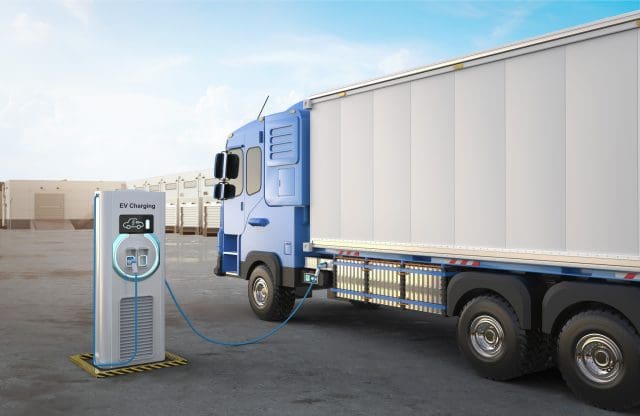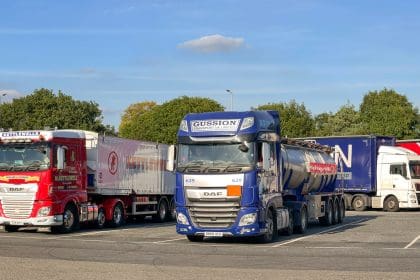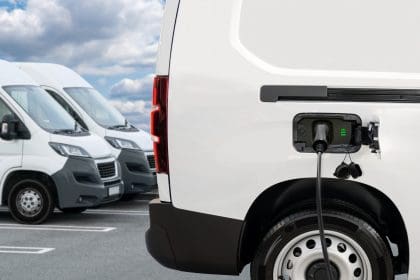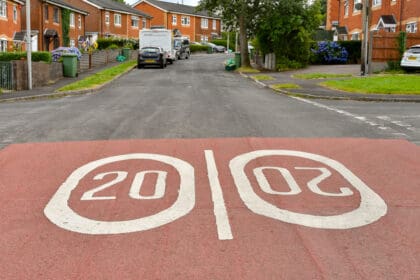There is light at the end of the fleet EV tunnel – which appears to be getting brighter.
With huge costs involved and concerns about vehicle range, fleet owners and drivers have been understandably wary about making the switch to EVs. But those who have made inroads say they are already seeing the benefits.
Challenges
Taxi fleet owners have endured a bumpy ride during the early days of EV taxis and PHVs, but hauliers face the biggest challenges when making the switch to electric lorries.
With major concerns about the cost and range of electric HGVs, sustainability outlet Edie reports that only 0.5% of trucks sold in the UK in 2024 were zero-emission models. With the sale of all new, non-zero emission HGVs of up to 26 tonnes to be banned from 2035, the Society of Motor Manufacturers and Traders (SMMT) is calling for “urgent” policy interventions to ease the transition.
But it also reports that some fleets have set about reinventing the wheel to ensure that they can make the most efficient use of the technology available.
It found that Screwfix and Sainsbury’s have introduced new logistics processes and systems which are “increasing the viability of electric heavy goods vehicles in UK business”, with both “investing in innovative measures to decarbonise their transport fleet”.
EV fleet
Screwfix has added two new electric HGVs to its logistics fleet, each with a 200-mile range per charge. The vehicles will be used twice per 24-hour period and fit in with the operational efficiency of the company’s existing fleet.
The company has installed charging stations at its Lichfield Distribution Centre, with electricity sourced from renewable sources including a large solar panel installation on-site to help cut its transport emissions, in addition to the 85% of its current fleet being powered by hydrotreated vegetable oil, a renewable fuel made from waste products.
Sainsbury’s and supplier RenECO are reducing the supermarket chain’s carbon footprint by using biofuel from its food waste to power 30 of its HGVs, which could save more than 3,000 tonnes of CO2 each year.
Sainsbury’s chief property and procurement officer Patrick Dunne said: “This announcement underscores the power that collaboration has in driving impactful change across business. We are proud to have worked closely with our supplier RenECO to deliver a pioneering move that supports our commitment to circularity and helps us to take a further step towards becoming net zero across our operations by 2035.”
Charging on the road
While not every aspect of running an electric HGV can be kept in house, motorway services operator Moto has announced plans to create 23 electric truck charging hubs, so lorry drivers can operate the same way as they do now.
Commercial Motor reports that this will create 300 eHGV charging bays by 2030 and construction is expected to be under way at the first two eHGV charging hubs in Exeter and Tamworth.
Moto CEO, Ken McMeikan said: “Just as we have done for passenger cars, where we now have more than 1,000 EV charging bays, Moto will lead the way in creating a sustainable, accessible, and reliable charging network for trucks and lorries. Our eHGV superhubs will support the decarbonisation of the transportation network, a key part of the energy transition. This critical infrastructure will unlock electric freight growth for the UK economy.”
In the first phase of this roll out, Moto aims to create 15 hubs on key routes over the next two to three years. An additional eight charging hubs will be worked on after the initial 15 are built to total 23 sites by 2030.
Car chargers
Meanwhile, car dealer Arnold Clark has announced a £20 million expansion of its own EV charging network.
EV Fleet World reports that the dealership plans to more than double its current 240 charging sites to 500 chargers at 100 locations across the UK. Charging points must be booked using the Arnold Clark app.
Eddie Hawthorne, chief executive and group managing director of Arnold Clark, said: “As electric vehicles become more and more common on UK roads, we know that our charging infrastructure needs to develop and grow to meet these increasing demands.
“That’s why we’ve heavily invested in our very own bookable ultra-rapid charging network across the country: Arnold Clark Charge.
“The new charging hubs will allow customers to charge easily and safely while on the go, while saving money.”
While there is no single solution to the EV changeover, collaboration and everyone doing their bit has shown what can be achieved, rather than everyone panicking that they cannot meet the 2030 or 2035 deadlines or cannot afford to switch.




